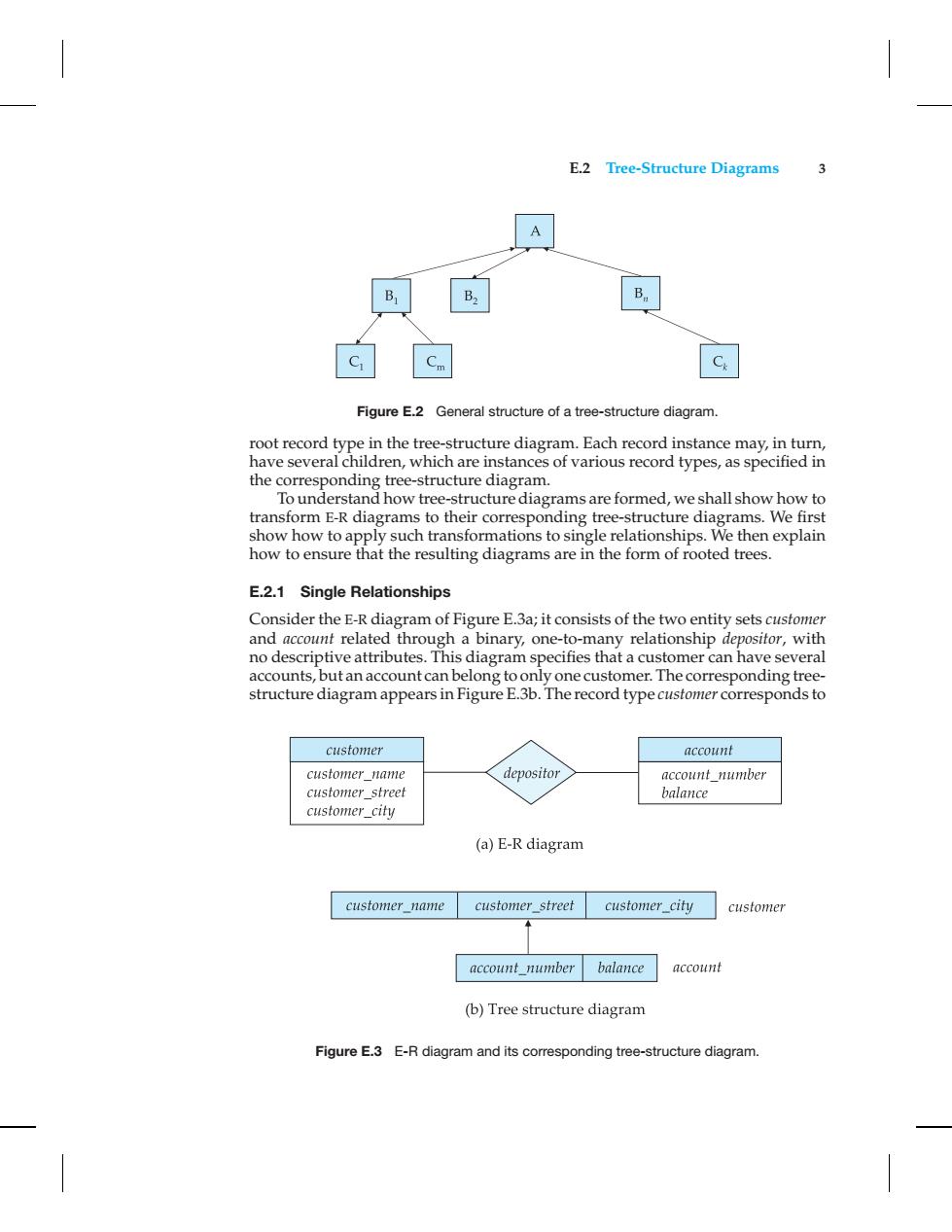正在加载图片...

E.2 Tree-Structure Diagrams 3 B Figure E.2 General structure of a tree-structure diagram. root record type in the tree-structure diagram.Each record instance may,in turn, have several children,which are instances of various record types,as specified in the corresponding tree-structure diagram. To understand how tree-structure diagrams are formed,we shall show how to transform E-R diagrams to their corresponding tree-structure diagrams.We first show how to apply such transformations to single relationships.We then explain how to ensure that the resulting diagrams are in the form of rooted trees. E.2.1 Single Relationships Consider the E-R diagram of Figure E.3a;it consists of the two entity sets customer and account related through a binary,one-to-many relationship depositor,with no descriptive attributes.This diagram specifies that a customer can have several accounts,but an account can belong to only one customer.The corresponding tree- structure diagram appears in Figure E.3b.The record type customer corresponds to customer account customer name depositor account number customer street balance customer_city (a)E-R diagram customer name customer street customer city customer account number balance account (b)Tree structure diagram Figure E.3 E-R diagram and its corresponding tree-structure diagram.E.2 Tree-Structure Diagrams 3 Figure E.2 General structure of a tree-structure diagram. root record type in the tree-structure diagram. Each record instance may, in turn, have several children, which are instances of various record types, as specified in the corresponding tree-structure diagram. To understand how tree-structure diagrams are formed, we shall show how to transform E-R diagrams to their corresponding tree-structure diagrams. We first show how to apply such transformations to single relationships. We then explain how to ensure that the resulting diagrams are in the form of rooted trees. E.2.1 Single Relationships Consider the E-R diagram of Figure E.3a; it consists of the two entity sets customer and account related through a binary, one-to-many relationship depositor, with no descriptive attributes. This diagram specifies that a customer can have several accounts, but an account can belong to only one customer. The corresponding treestructure diagram appears in Figure E.3b. The record type customer corresponds to Figure E.3 E-R diagram and its corresponding tree-structure diagram